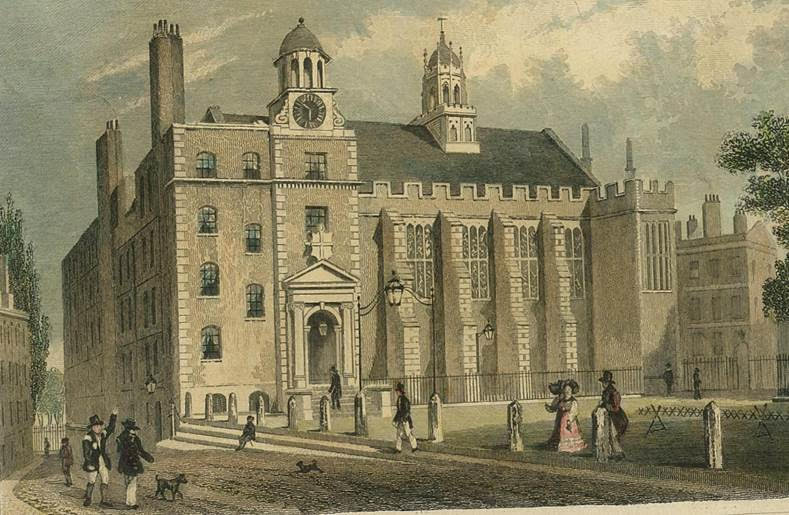|
In order to be called to the English Bar (to become a Bencher) in London a barrister had to be a member of one of the four Inns of Court which includes the Societies of Inner Temple, Middle Temple, Lincoln’s Inn and Grays Inn. The Society of Middle Temple is famous for its turret clock which was made by William Clement in 1667. According to the contract made between William Clement and the Society, Clement agreed to make a clock to go above the porch of their hall by Michalmas (29th September) 1667 for the sum of £45. The very next entry in the Society’s Treasurer’s Receipt Book made on the same day, is an agreement with the bellfounder William Wightman to supply a bell for the clock which had to be better than the one at Lincoln’s Inn, both for metal and sound. The Society’s Hall was one of the few halls to have survived the Fire of London in September 1666 here the Company was ordering a new clock and bell in May 1667. They also had their fire-engine repaired in May 1667 after it had performed so badly during the Fire. William Clement had been freed by the Blacksmiths’ Company in 1664 and had set up in business making turret clocks in Southwark near his former master Thomas Chapman and his eldest brother Richard Clement who had moved to Southwark as a clockmaker by 1660. The Society of Middle Temple chose William Clement, a newly qualified clockmaker in preference to a more experienced one, to make their new clock. However in 1656 Christian Huygens introduced the first clock with verge escapement and a pendulum control. The verge escapement and short pendulum were not very reliable as a timekeeper. William Clement had helped his elder brother Walter Clement who was an anchorsmith, to make his anchors. So with his idea of using an inverted anchor as the pallets and an ordinary wheel with 30 teeth as the escape wheel he was able to produce a more accurate escapement in conjunction with a pendulum of approximately 39 inches long with a heavy bob which would beat once every second (the Seconds or Royal Pendulum). William Clement may have made an earlier clock with anchor escapement because the Society of Middle Temple had obvious heard about his new clocks. They chose Clement to make their new clock but they could have approached a more experienced clockmaker such as Thomas Chapman, his former master. Unfortunately Clement’s clock at Middle Temple Hall has not survived but the Society has a print of the Hall drawn by Thomas Shepherd about 1815 by which time the movement of the old clock may have been replaced. However, the print shows us where William’s clock had been (fig 2). The clock above the entrance of the Hall was destroyed during the 2nd World War when a bomb destroyed the whole of the entrance tower. You can find out more about William Clement in my new book "Early Clock and Watchmakers of the Blacksmith's Company" where Chapter 10 provides a fuller description of William Clement's life and contribution to clock-making.
4 Comments
|
AuthorKeith Bates is an amateur horologist who has been researching clocks, watches and chronometers and their makers for over 30 years. Archives
August 2023
Categories
All
|



 RSS Feed
RSS Feed